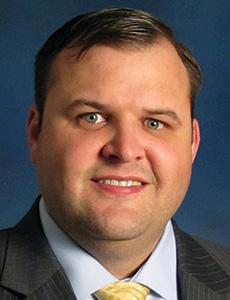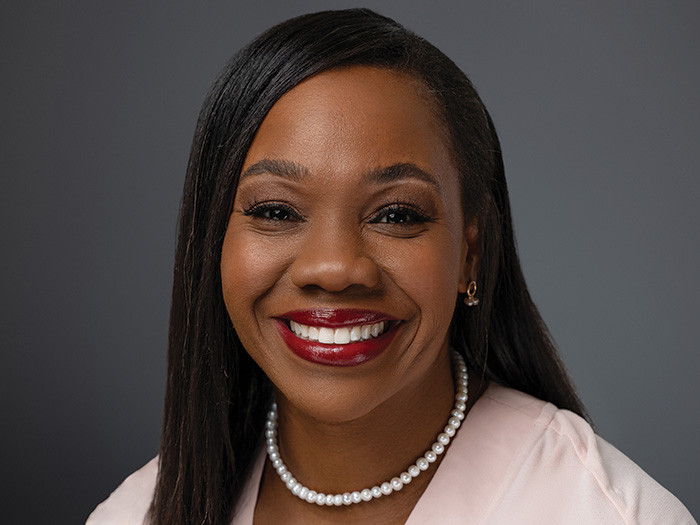Catastrophic Events Are Now Everywhere: The Urgent Need for Better Property Protection
In many ways, 2023 flipped the script. Underwriters expect to see their largest property losses during hurricane season — but last year’s hurricane season was relatively mild, and the U.S. still endured a record-setting 28 weather events causing over $1 billion in damage.
One cause? More regional weather events like severe convective storms, which lack the power of a hurricane but still rack up billions in damages with their high winds, hail and floods.
These types of events “were considered to be ancillary perils in the past,” said Valerie Turpin, EVP and chief underwriting officer, property, Arch Insurance. “Now, they’re considered their own stand-alone perils. They are [becoming] more important; they have their own characteristics.”
Ultimately, 2023 proved that property owners, risk engineers and underwriters can no longer treat convective storms as a Nat CAT policy afterthought. As property exposures change, the way we identify and protect potential targets from storm damage must change as well.
Changing Risk Profiles
Last year’s spike in losses caused by severe convective storms (SCS) was likely due to multiple converging factors.
For one, the weather itself may be changing. “If you look at national data for SCS, we’ve seen that what we used to call the tornado belt is moving east,” Turpin explained. “We’ve also seen that the extent of hail events is a little bit wider.”
Meanwhile, development is pushing into new geographic areas, introducing the expanding bull’s-eye effect. “When more and more people are moving to a certain location, there are potential disasters that could have a larger impact going forward irrespective of what the climate does,” said Tim Johnson, principal engineer, Verisk. “The exposure is always growing … That frequency is always going to go up just because there is more property in the way to impact — and it’s more expensive property.”
That expensive property increasingly includes things like solar arrays. While engineers have a good idea of how to construct buildings that are resilient to high wind and hail, solar panels are still relatively new — best practices regarding where and how to install them are still in development. When hail does strike a solar farm, the damage can be widespread and costly.
“There’s probably been no better time to talk about the measures that companies can take, not just to transfer their risk but to really reduce it. And by reducing their risks, they make themselves more attractive to insurers.”
— Louis Gritzo, chief science officer, FM Global
Then there’s the nature of the storms themselves. SCS are characterized by extremely heavy precipitation in a very short period of time, which can lead to pluvial or flash flooding, even in areas that haven’t seen floods in the past. Unlike rising ocean or river levels, pluvial flooding doesn’t stick to low-lying areas — it’s on the move from one place to another and often finds human development in its way.

Adam Hurley, VP, head of property risk engineering, Zurich Resilience Solutions
“We’re seeing more and more flood-prone areas that aren’t necessarily FEMA flood zones, but just areas that have been built up over the years,” said Adam Hurley, VP, head of property risk engineering at Zurich Resilience Solutions. “We were seeing more than half of our flood losses in areas outside of designated FEMA flood zones … drainage systems becoming overwhelmed by these significant rain events that happen over a short period of time.”
Even when water is diverted and controlled, heavy rains can also trigger mudslides and landslides; high elevation is no protection.
“Property values continue to escalate,” said Mark Berven, president and chief operating officer at Nationwide, leading P&C insurance. “So the total insured values in communities have continued to rise. You combine that with an increase in the frequency of significant catastrophic events and you’ve got the dynamic that, from an insurance perspective, is the worst of all worlds: You have an increase in frequency, which is also creating — given valuation and what that is — an increase in severity … All parts of the country are now prone to catastrophe events; it’s not just isolated to given geographic parts of the country.”
“It’s very clearly a different market than it was seven or eight years ago,” said Louis Gritzo, chief science officer, FM Global. “There’s probably been no better time to talk about the measures that companies can take, not just to transfer their risk but to really reduce it. And by reducing their risks, they make themselves more attractive to insurers.”
The Lay of the Land
For underwriters and risk engineers, the first step toward avoiding losses is understanding conditions on the ground. Some information can be gleaned from a site’s geographic location, but ultimately, this can only go so far.
“The models [for secondary perils] are not as developed and mature as the models for earthquake and hurricane,” said Turpin, “so there is a need to complement the models available on the market by risk assessment.” In addition to the location of the property, site analysis for SCS risk must include more detailed information about the position of assets on that property: “You need to look at the structure level instead of only at the location level. If you have a campus-style organization, you really need to go to the structure. For flood, you need to know the elevation, you need to know what the type of soil is on a more granular basis than for major perils. There’s a need for a different type of data set.”
That being said, knowing how prone a location is to SCS is an important part of assessing its risk. “Last year, we released a Climate Change Impact Report that takes a look into the future, location by location, using the best available science as to what hazards are expected to change, with margins of uncertainty,” Gritzo said.

Valerie Turpin, EVP and chief underwriting officer, property, Arch Insurance
Remote imaging also gives risk engineers a better sense of a site’s topography and how it might behave during pluvial flooding.
As Jonathan Salter, head of risk consulting at AXA XL, put it, “That pin on the map tends to be the mailbox for the site — the postal address — and that could be half a mile away from the building, if you’re on a large industrial site. Having the footprint of the building identified gives us so much more detail around what’s likely to happen.”
He added, “Twenty years ago, we may have had one map available to us if we were looking up a location, and it tended to be a state-sponsored flood map … Now, we’ve got so many different sources of data available to us, and different views of flood risk, to get a really good picture of risk. It’s about combining all those multiple sources to give us the most accurate, up-to-date, rich data set.”
“The data that we use is more available. We can use LIDAR scans of the earth and predictive analytics to help us understand where water is likely to flow if we have severe rain events that overtax drainage systems,” said Hurley. “In very recent years, this area has evolved significantly. If you compare where we were five years ago, many carriers are much more data-driven now. We have a much better viewpoint of where water is going to go, as well as how you would prevent or mitigate that sort of risk.”

Louis Gritzo, chief science officer, FM Global
Richer map data gives risk engineers a clearer sense of where a property’s high-risk areas are, but this doesn’t replace site inspection; it only informs it. Using remote imagery, “you’re not going to see things like below-grade entrances, loading docks, high-value locations that might be in a basement,” Gritzo said. “That’s where we need that engineer to actually go to the site, boots on the ground, take a look at that location with the knowledge of all the things that we’ve given them in advance, to be able to say, ‘Here’s where your risk is.’ And then, most importantly, ‘Here are some things that you can do to reduce that risk.’ ”
Hardening a Property
Here, too, recent years have delivered ample innovation. Once a risk engineer knows how floodwater might flow across a property, they can begin to design strategies to prevent it from damaging valuable assets.
The site analysis “is very much about understanding things like how deep can the water be?” Salter said. “What damage would the water do? How much would the damage cost? And that’s what allows you to develop that mitigation plan, because then you can start to work out the cost of eliminating those risks.”
At the level of an individual site, flood mitigation strategies can be as simple as installing sensors. “Of course you get water intrusion from flooding, but you also get it from material failures of piping systems too,” said Ken Travers, technical manager for property and product, The Hartford. “There’s a lot of technological change in that space, in IoT, where we have sensors placed in critical parts of the structure. It could be in low-lying, flood-prone areas to identify leakage, water intrusion, and make it known very early on in the process.”
“I’m surprised there’s not more adoption of the simplest things,” added Hurley. “It’s water leak detection and automatic shutoffs in soft-occupancy buildings … Just to be able to shut off the water before it freezes and breaks your pipes is such a simple thing, and yet we see millions and millions of dollars in losses for this exact scenario. That one is a no-brainer for me. You can remotely close water valves if you’re not at the building, or you can drain systems. It’s pretty powerful, yet simple. I would expect that in the coming decade, we will see this become part of standard construction in many cases.”
Closely related are flood control or flood mitigation valves. Most sewer systems rely on gravity, and many have no measures in place to stop sewage from flowing in the opposite direction if water levels start to rise. When drainage systems are overwhelmed, flood control valves can prevent stormwater from backing up into a building.
“We’ve heard stories in the past where people have managed to protect the water from coming in, but all of a sudden, manhole covers in the factory floor are blown 10 or 15 feet into the air and water’s shooting up,” Salter said, adding that pumps are another simple but vital tool. “Do we have pumps ready, and where would we pump the water to?”

Ken Travers, technical manager for property and product, The Hartford
To prevent water from getting close to a structure, “there are many different temporary barriers out in the market now,” Travers said. “Some are very effective, relatively inexpensive and reasonably efficient to set up … I’ve seen a lot of changes in that space over the past five to 10 years.”
FM Global, Gritzo explained, has compiled “a lot of different methods and products that we’ve tested and certified through our FM Approvals organization that clients can put up to keep water out. [We know they] work because we’ve tested and certified their performance under flowing water with debris impact.”
“Usually, the water is not deep. It can simply be directing surface water away from part of your facility, and that’s an area that has progressed quite a bit. There are protection devices such as water bladders that are now connectable and can hold back large amounts of water,” Hurley explained. “We’re looking at retrofitting doors and other building openings with floodgates; we’re looking at elevating equipment. If you know you might have an inch or two of water in the building, let’s make sure that critical equipment gets elevated above that. In many cases, we’ll look at remote monitoring as well so that we know when a response is needed … If you don’t know the water is there, you can’t really respond to it.
“If you’ve got a below-grade parking garage entrance and you need that protected during some of these severe storms, you need a solution that provides protection but also allows you to still use the parking space,” Hurley continued. “In spaces where we historically would have said ‘We can’t put a floodgate here because people need to get in and out of here all day, every day,’ they can turn to automatic protection: A barrier that is down when it’s not needed, and then when the water comes up, it raises up and there is a protection barrier.”
“There are many different temporary barriers out in the market now. Some are very effective, relatively inexpensive and reasonably efficient to set up … I’ve seen a lot of changes in that space in the past five to 10 years.”
— Ken Travers, technical manager risk engineering,
property and product, The Hartford
Of course, none of these tools will help if they’re not deployed in time — that’s why it’s crucial to have a FERP (flood emergency response plan) in place and routinely test it during tabletop exercises.
A FERP is “basically a set of procedures that different personnel are assigned,” Travers explained. “If they have flood barriers, they put those directives in place. It may be moving stock — maybe you have pallets of stock in a lower level that’s exposed, so getting those moved to a higher elevation out of the flood zone or the inundation level. Or it could be contacting and setting up alternative process locations so that the business process can continue off site.”
“Do they have shutters they’re supposed to put on?” Hurley added. “Do they have the contractor they know they’re supposed to call and who will actually answer the phone? These are the sorts of procedures we want our customers to test beforehand, when things aren’t crazy. Because if a hurricane is bearing down, people are leaving … Don’t make a plan for somebody to be in the building 10 hours before a hurricane hits, because you don’t want that. Those people are protecting their houses, and then they’re gone at that point.”
Fit or Retrofit?
Even better than retrofitting a building is designing it to be flood-resistant from the jump.
“There’s much more awareness on the front end of planning a building, and that comes down to simple things like site selection,” Hurley said. “We work with a lot of customers when they’re thinking about a new facility — where do we even want to put this, if it’s got to be exposed to hurricanes? How do we minimize the potential for some of these other exposures that come with that? Or it could be the Midwest, and the question is how do we manage a hail exposure? How do we manage potential flood exposure? New construction is a different animal. I wouldn’t necessarily be looking at putting floodgates and things like that in a brand new construction building, because I would tell them to elevate the building before I would tell them to put those floodgates in.”
“The room for improvement is more in what’s going to be built rather than what’s been built,” Salter agreed. “Now that we know what we know about where places are likely to flood and we’ve got much better data, the room for improvement is in building flood defenses into a project build, rather than building something and then trying to retrofit. So we do see clients building on stilts, and we do see clients building the type of prevention measures that we’re talking about into the original build. Rather than going back and retrofitting some of this stuff, we see it factored in from day one.”
This proactive approach allows builders to incorporate strategies that can’t be easily retrofit, like reinforced roofs that address this common point of failure during high winds. A recent study showed that adding physical security features during the design-build phase reduced construction costs by up to 20% compared to adding them to a finished building, and the figures may be similar for weather defenses as well.
A study from the National Institute of Building Sciences showed that adopting the latest building code saves $11 for every extra $1 spent, noting that, at a national level, raising freeboards four feet in buildings constructed on river floodplains would cost $900 million but save $4.2 billion in future losses, among other findings.

Mark Berven, president and chief operating officer at Nationwide, leading P&C insurance
“It isn’t going to be a quick fix. It’s about public awareness,” Berven said. “One of the things that I often hear is, ‘Adopting certain building codes and standards will increase costs up front.’ That may be true, but if you think about the total cost of ownership, it’s a really quick payback period that you get for a nominal up-front cost. So there’s a great focus on trying to create more awareness around that.
“The thing that concerns me more than anything else, it’s just the duration of time that it takes,” Berven continued. “It’s that constant push, getting information out, activating with our distribution partners, our agents, informing them of what they can do at a local level related to building codes, and providing guidance around the research that’s been done.”
“There’s a lot of broader recognition, especially around natural hazards, that this is something companies need to have top-of-mind,” Gritzo said. “We’re hearing from our clients’ boards of directors; we’re hearing it from their employees; our clients get shareholder pressure — not only regulatory reporting, but shareholder pressure to say, ‘What are you going to do to protect your business from this changing world of natural hazards?’ ” &










